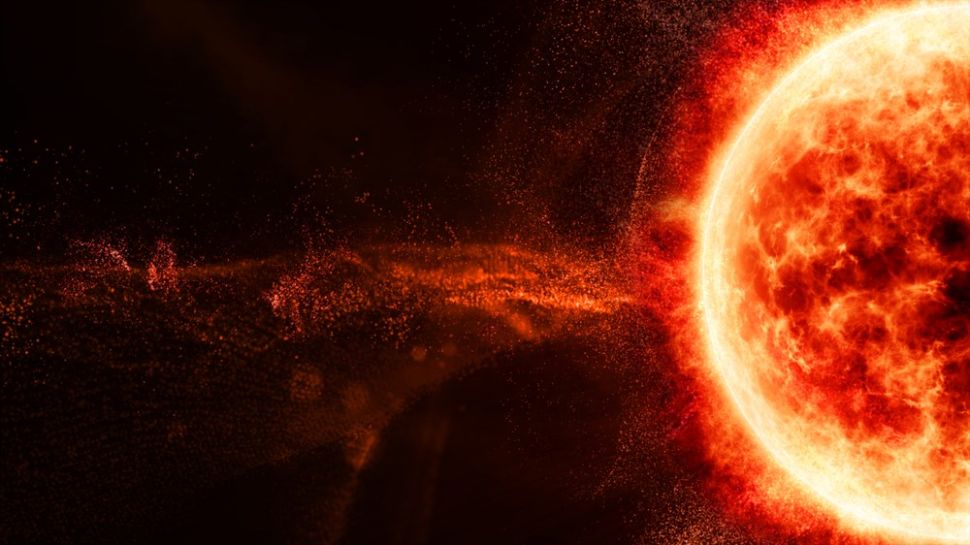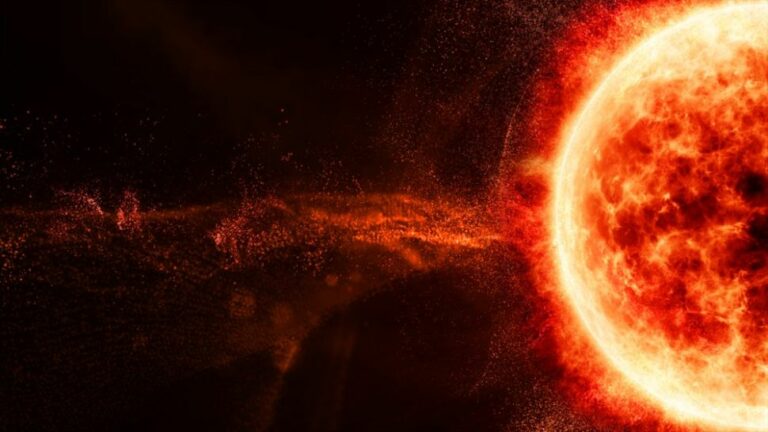On Wednesday, a solar storm from the sun’s solar hole will strike Earth (Aug. 3)
Thankfully, the storm is classified as weak.
On Wednesday, August 3, the Earth’s magnetic field is expected to be hit by fast solar winds coming from a “hole” in the sun’s atmosphere, which will cause a mild G-1 geomagnetic storm.
After noticing that “gaseous material is leaking from a southern hole in the sun’s atmosphere,” forecasters at the National Oceanic and Atmospheric Administration’s Space Weather Prediction Center (SWPC) made the prediction, according to spaceweather.com.
Coronal holes are regions of cooler, less dense electrified gas (or plasma) in the sun’s upper atmosphere. These are also the locations where the magnetic field lines of the sun shoot outward into space rather than looping back in on themselves. According to the Exploratorium, a scientific museum in San Francisco, this allows solar material to surge out in a torrent that may move up to 1.8 million miles per hour (2.9 million kilometers per hour).

This bombardment of solar material is absorbed by planets with powerful magnetic fields, including our own, which sets forth geomagnetic storms. The waves of extremely energetic particles that form during these storms partially compress the Earth’s magnetic field. These particles agitate atmospheric molecules as they travel along magnetic field lines close to the poles, releasing energy as light to produce auroras that are vivid and resemble the Northern Lights.
There won’t be much of a storm created by this material. Being a G1 geomagnetic storm, it might have a small impact on power grids and some satellite operations, such as GPS and mobile device functionalities. Additionally, it will bring the aurora as far south as Maine and Michigan.
Live Science recently stated that more catastrophic geomagnetic storms can disrupt our planet’s magnetic field with enough force to send satellites plummeting to Earth. Scientists have also warned that strong geomagnetic storms might potentially bring down the internet. According to the Space Weather Prediction Center, coronal mass ejections (CMEs), or debris that erupts from the sun, typically take 15 to 18 hours to reach Earth.
As the sun enters the most active period of its roughly 11-year solar cycle, this storm is occurring.
Since 1775, astronomers have known that the sun’s activity rises and falls in cycles. Recently, however, the sun has been more active than anticipated, with roughly twice as many sunspot sightings as NOAA had forecast. The sun’s activity is expected to increase steadily over the coming years, reaching an overall high in 2025 before declining once more. A new model for the sun’s activity was put out in an article that was published on July 20 in the journal Astronomy and Astrophysics. The approach, according to the publication’s authors, might be used to improve solar predictions.
According to scientists, the 1859 Carrington Event, which generated nearly the same energy as 10 billion 1-megaton atomic bombs, was the greatest solar storm ever seen in modern history. The strong stream of solar particles that hit Earth wrecked telegraph lines all around the world and caused auroras to shine as far south as the Caribbean that were brighter than the full moon’s brightness. Comparable to the 1989 solar storm that produced a billion-ton cloud of gas and triggered a blackout across the whole Canadian province of Quebec, experts warn that a similar occurrence today would result in trillions of dollars in damage and widespread blackouts.
Originally published on Live Science.
Do not forget to share your opinion with us to provide you with the best posts !




0 Comments